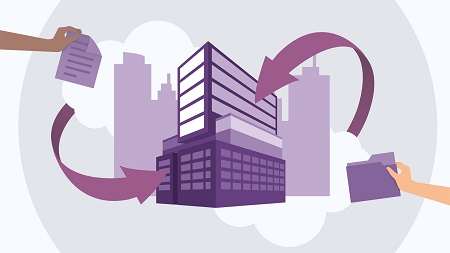
English | MP4 | AVC 1280×720 | AAC 48KHz 2ch | 3h 40m | 517 MB
Is Google Cloud Platform (GCP) the right choice for your enterprise application? GCP now has the enterprise-level features large organizations demand: IAM security, custom encryption, NoSQL database support, and cloud-native continuous integration and deployment. This course helps enterprise architects, network admins, and technology stakeholders evaluate and implement GCP services for their organizations. Learn how GCP addresses enterprise concerns—from reliability to partner integration—and discover the scenarios where it shines, including data warehousing and disaster recovery. See how GCP solutions—serverless computing, data storage, and data pipelines—map to these different scenarios, and explore the developer and DevOps tools that Google provides for building your own custom solutions. Along the way, instructor Lynn Langit shows how to use GCP to manage virtual machines, Docker containers, Kubernetes clusters, relational data stores, NoSQL data, data lakes, and more. She also shares practical tips for saving money, planning deployments, and integrating compatible services.
Topics include:
- Enterprise concerns
- Enterprise scenarios
- Setting up your organization’s account
- Managing billing
- Enterprise compute services
- Enterprise storage and database services
- Enterprise data pipelines
- GCP developer and DevOps tools
Table of Contents
Introduction
1 Enterprise-ready GCP
2 What you should know
3 Working with cloud services
GCP for the Enterprise
4 Is GCP enterpriser-ready
5 Enterprise concerns – Availability reliability
6 Enterprise concerns – Security cost
7 Enterprise concerns – Services partners
8 Core enterprise scenarios
9 Enterprise scenarios
Enterprise Setup and Security
10 Select your authorization domain
11 Set up your organizational account
12 Use resource hierarchy for access control
13 Managing organizational billing
14 GCP tool selection – Console or command line
15 Set up hybrid connectivity
16 Set up VPC network
17 Patterns for cloud enterprise applications
Enterprise Compute
18 Scenario – Lift and shift
19 Migrating VMs to GCE
20 GCE instance management
21 GCE instance groups and Velostrata
22 Anthos Migrate and Config Management
23 Scenario – New internal applications
24 Serverless with Cloud Functions and Cloud Run
25 Kubernetes abstraction level
26 Container-based with Cloud Run on GKE
Enterprise Storage and Database
27 Scenario – Disaster recovery
28 Cloud KMS and encryption
29 Cloud SQL
30 Cloud Spanner
31 Scenario – Data warehouse
32 BigQuery – Enterprise features
33 BigQuery – Machine learning
34 Cloud Dataprep
35 Cloud Data Fusion
Enterprise Data Pipelines
36 Scenarios – Serverless data lakes and pipelines
37 Scenario – IoT application
38 Cloud IoT Core
39 Cloud Bigtable
40 Scenario – Event data pipelines
41 Cloud Dataproc
42 Cloud Dataflow
43 Cloud Composer
44 Scenario – Genomics data pipelines
45 Google Genomics API and BigQuery
Dev and DevOps Tools
46 Cloud-native CI CD
47 Deployments GCP Marketplace and templates
48 Private Catalog and Container Registry
49 Cloud Source Repositories
50 Cloud Build
51 CI CD Pipeline Walkthrough Part 1 – Cloud Source Repositories
52 CI CD Pipeline Walkthrough Part 2 – Cloud Build
53 StackDriver Debugger and logpoints
Conclusion
54 Next steps
Resolve the captcha to access the links!